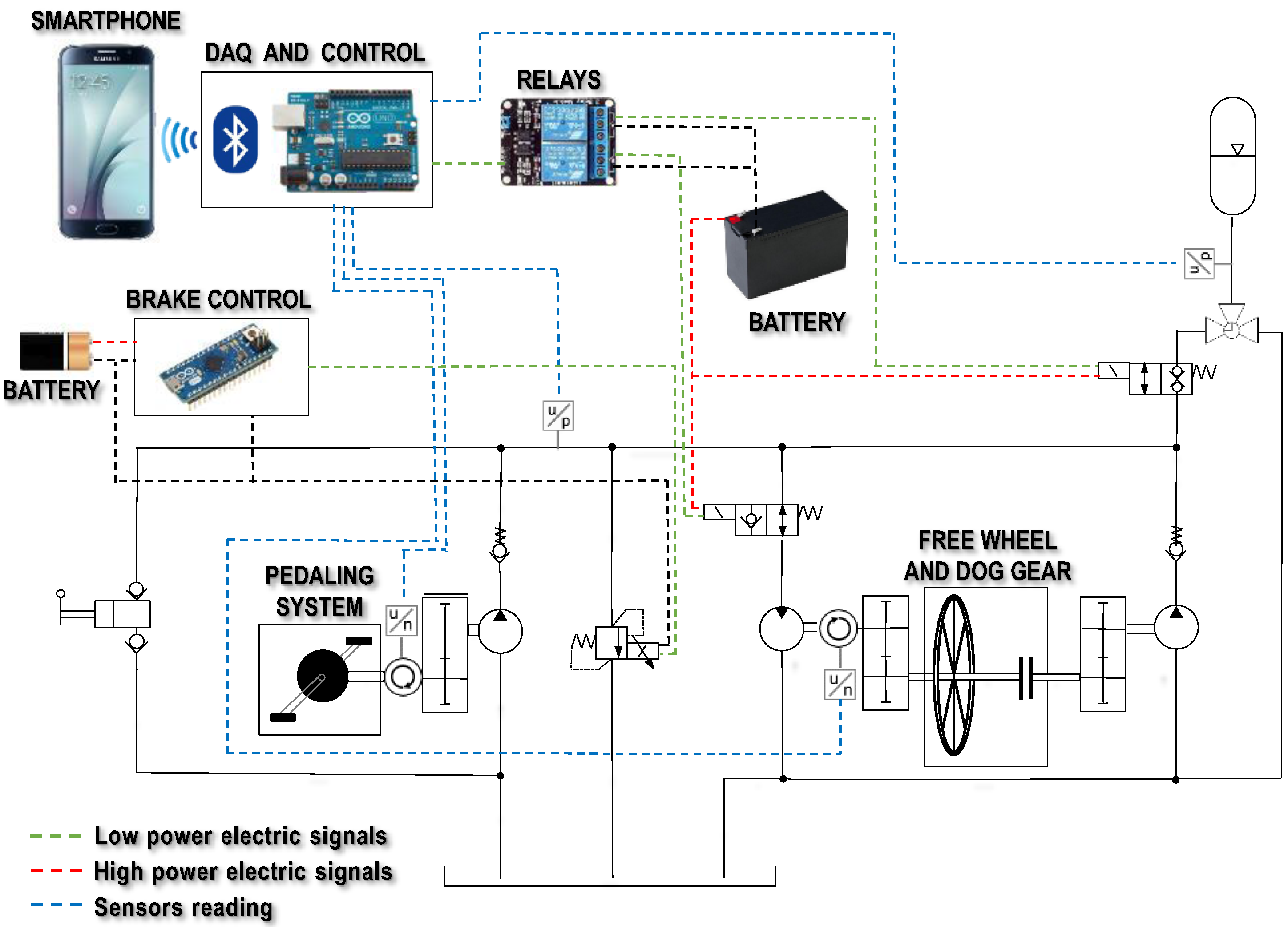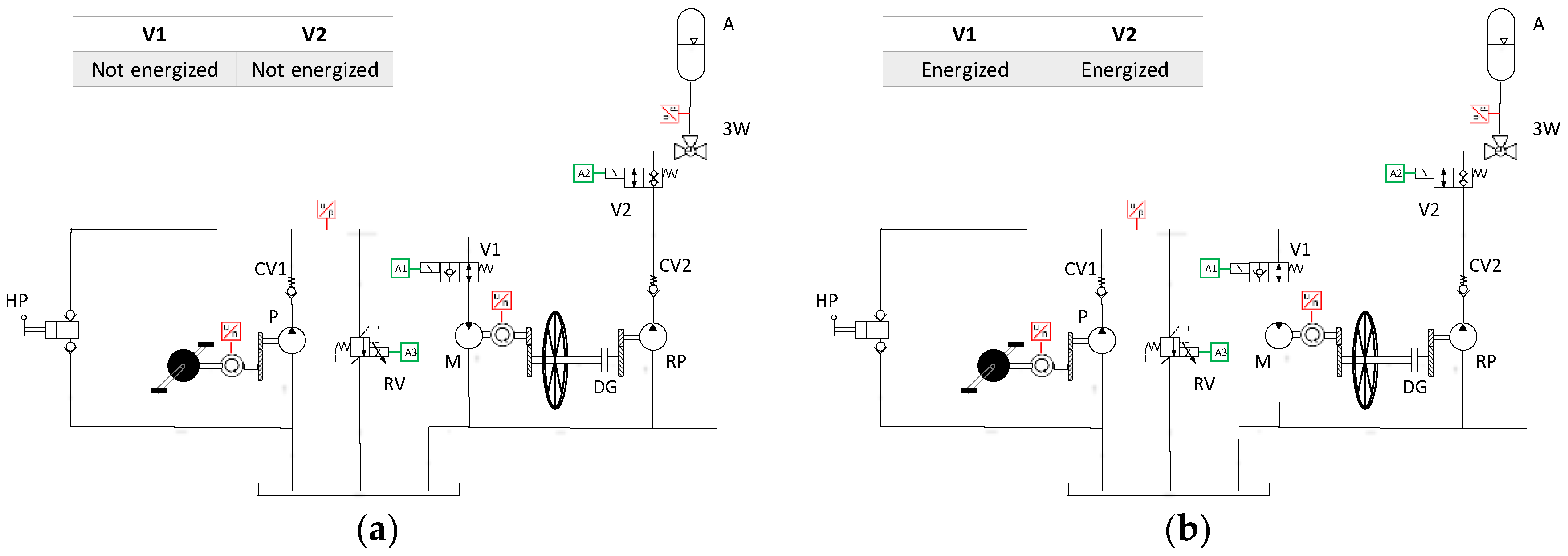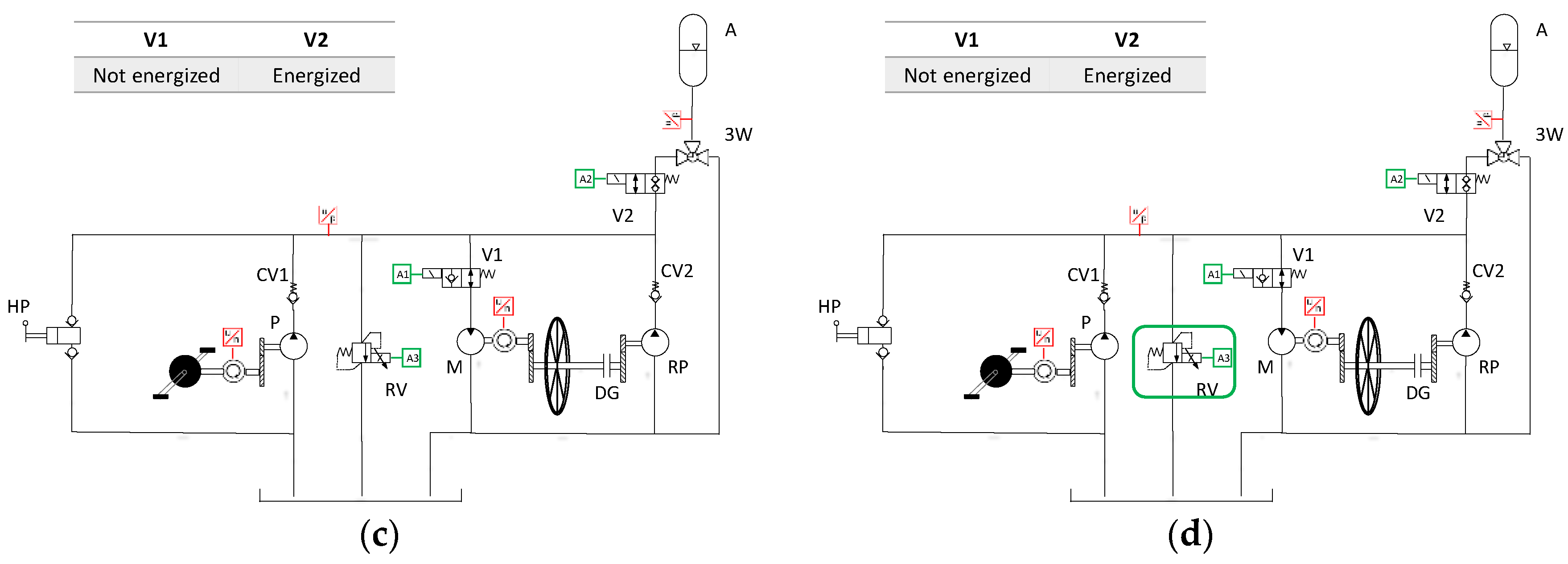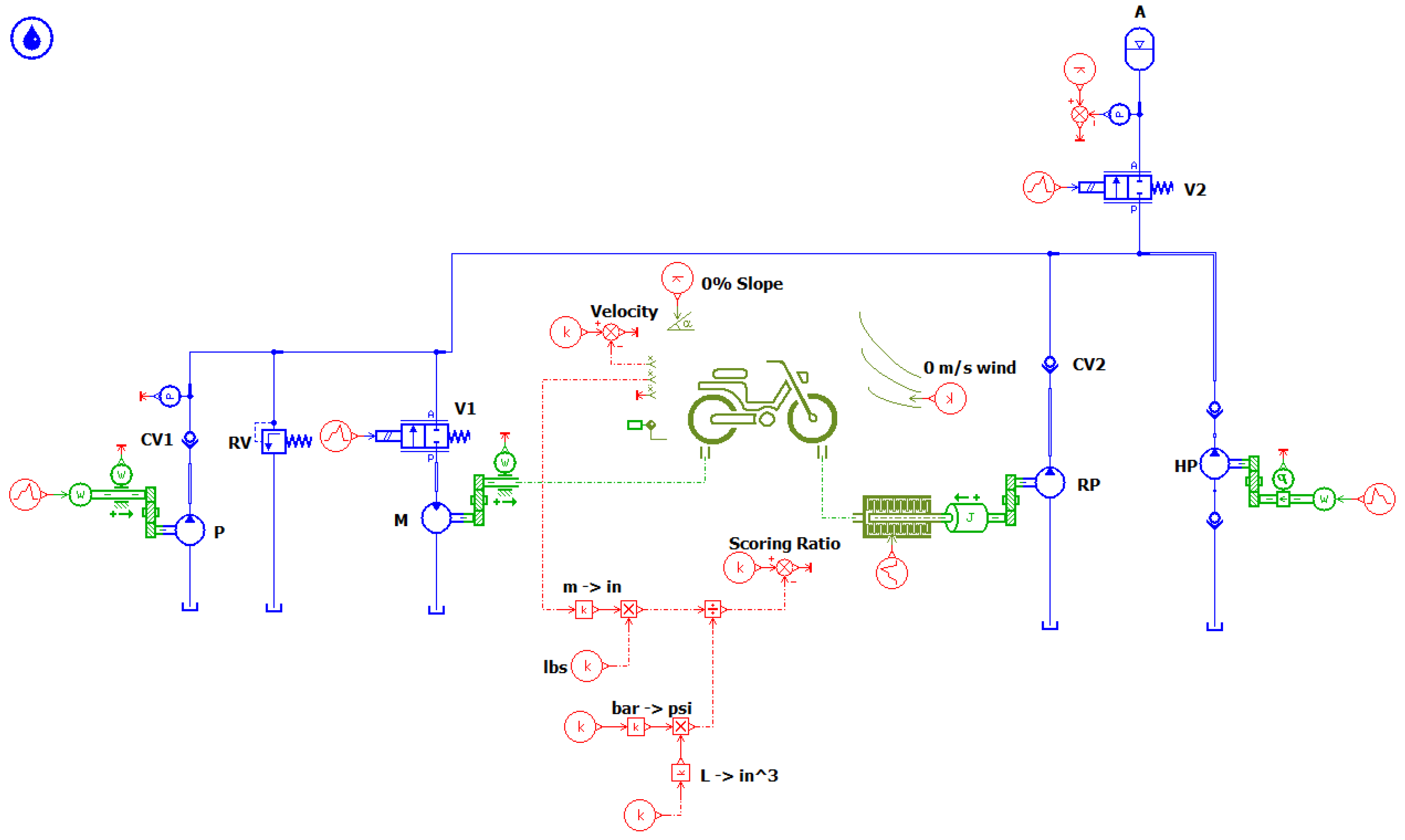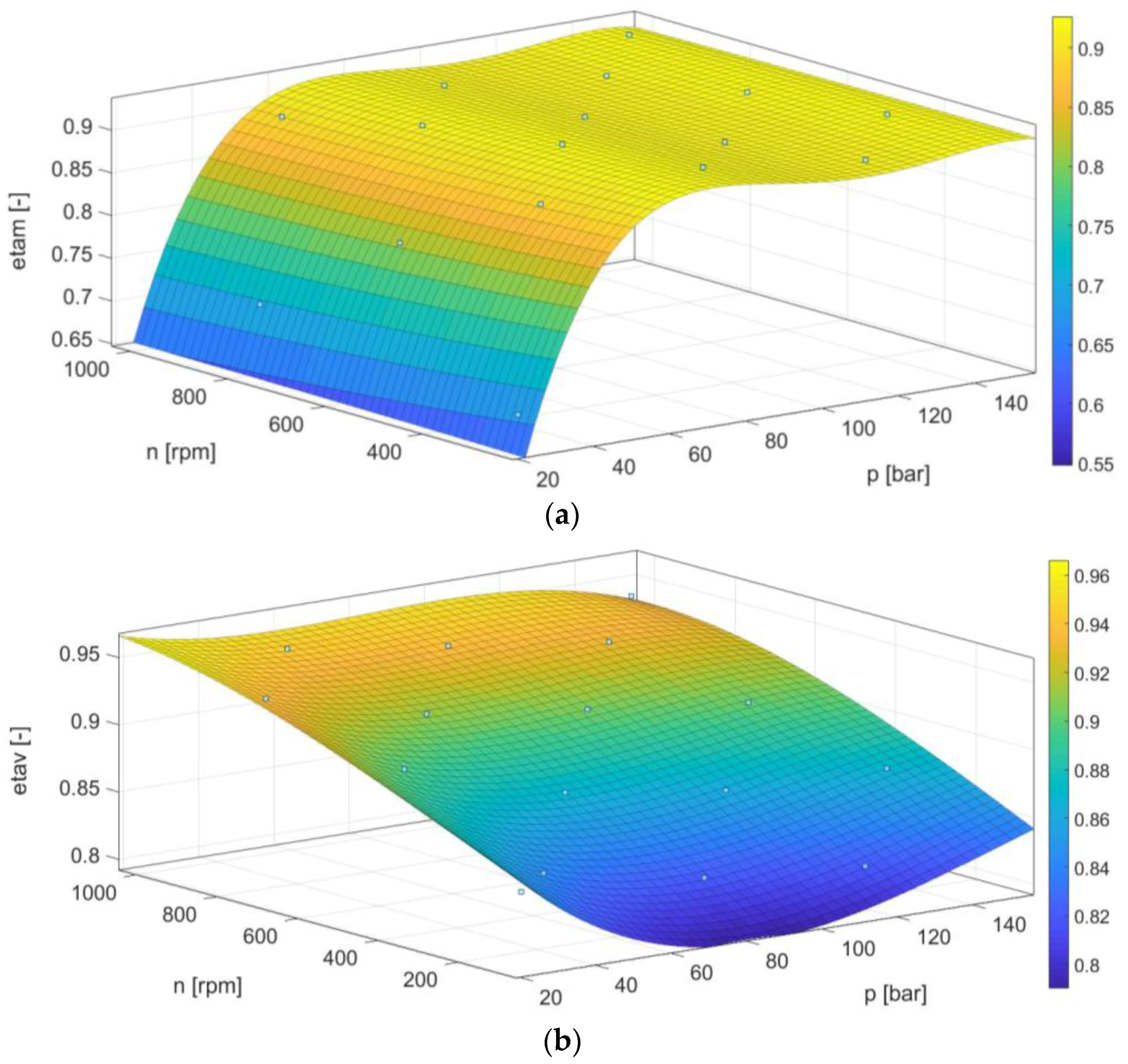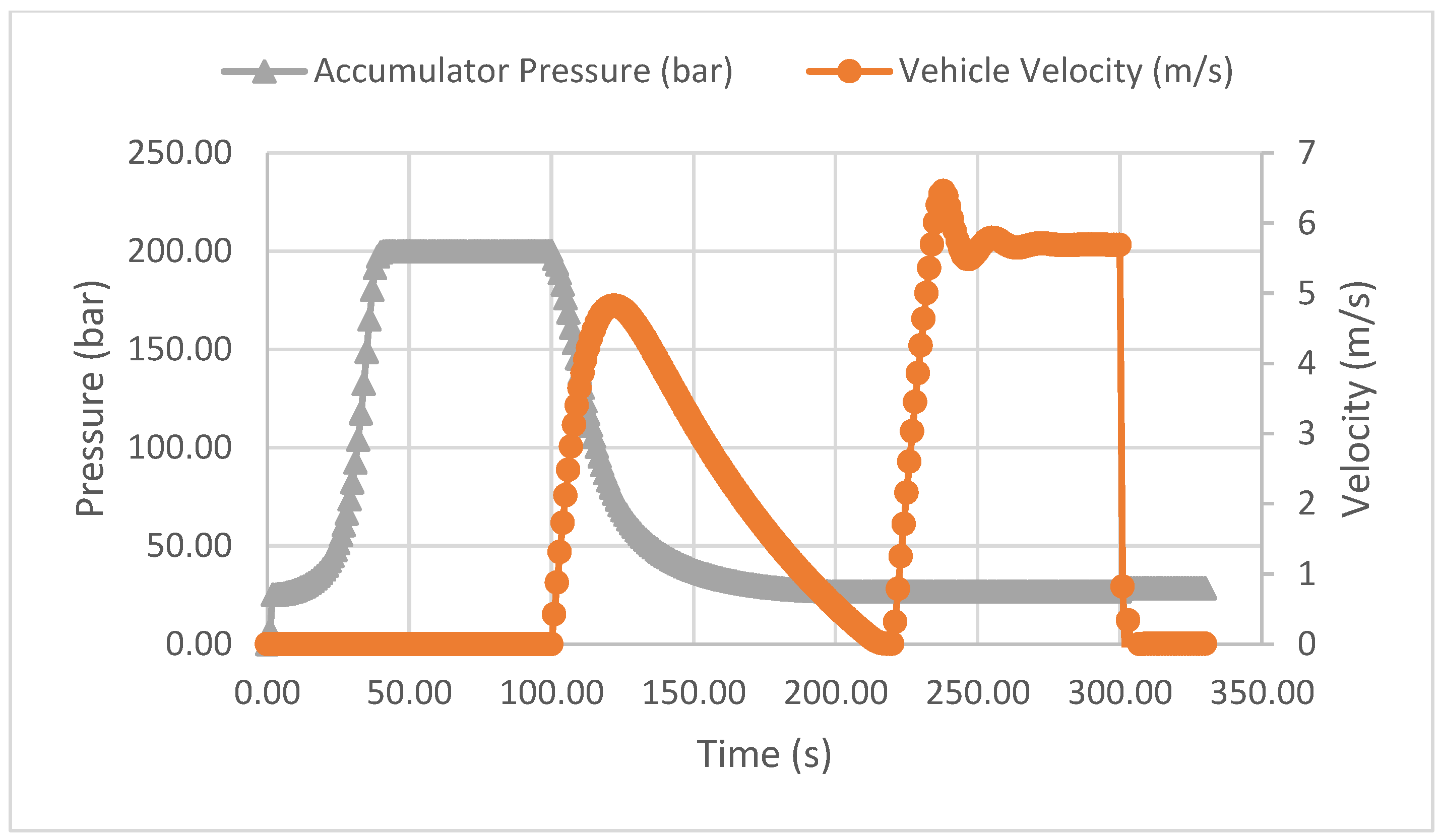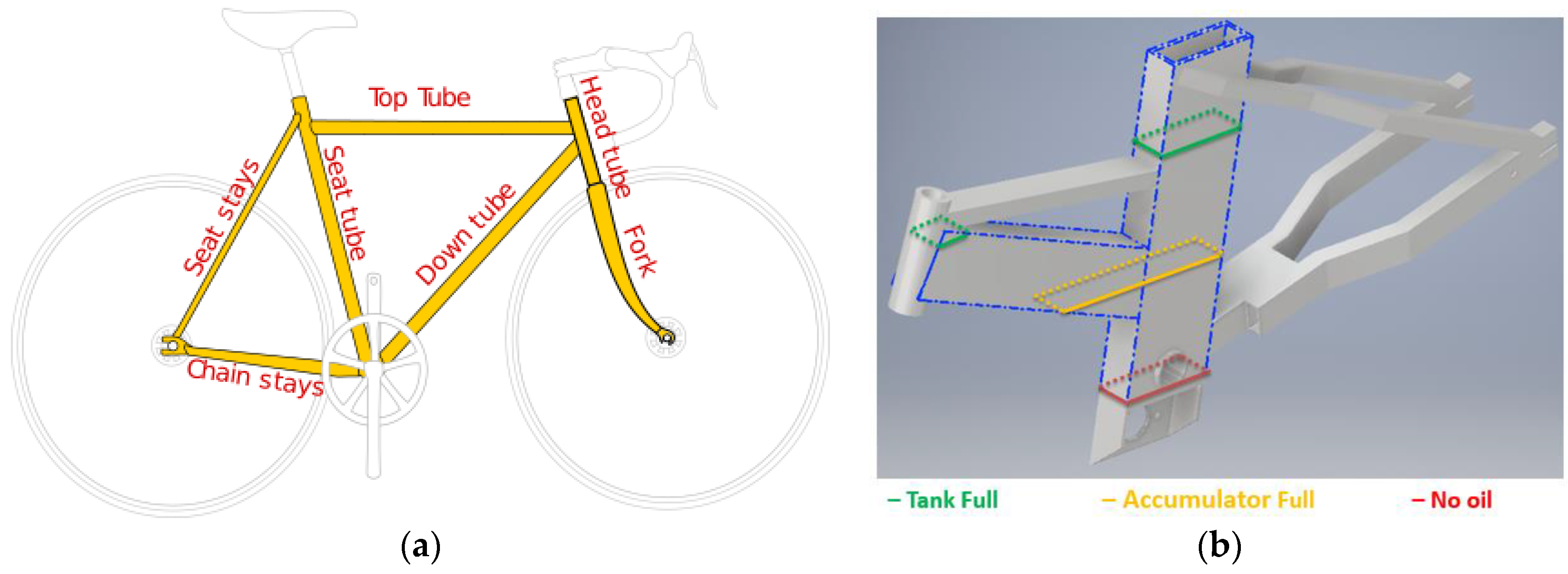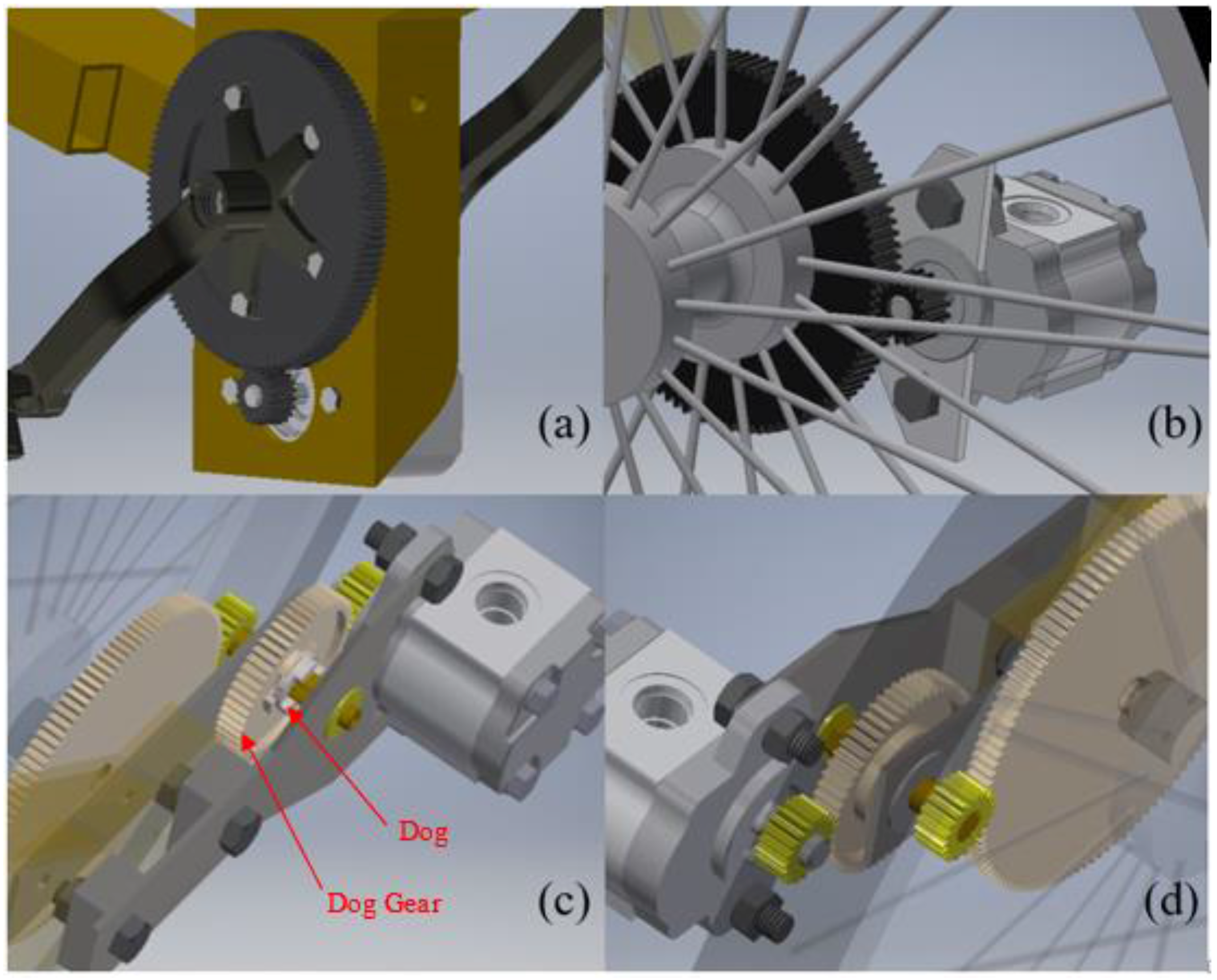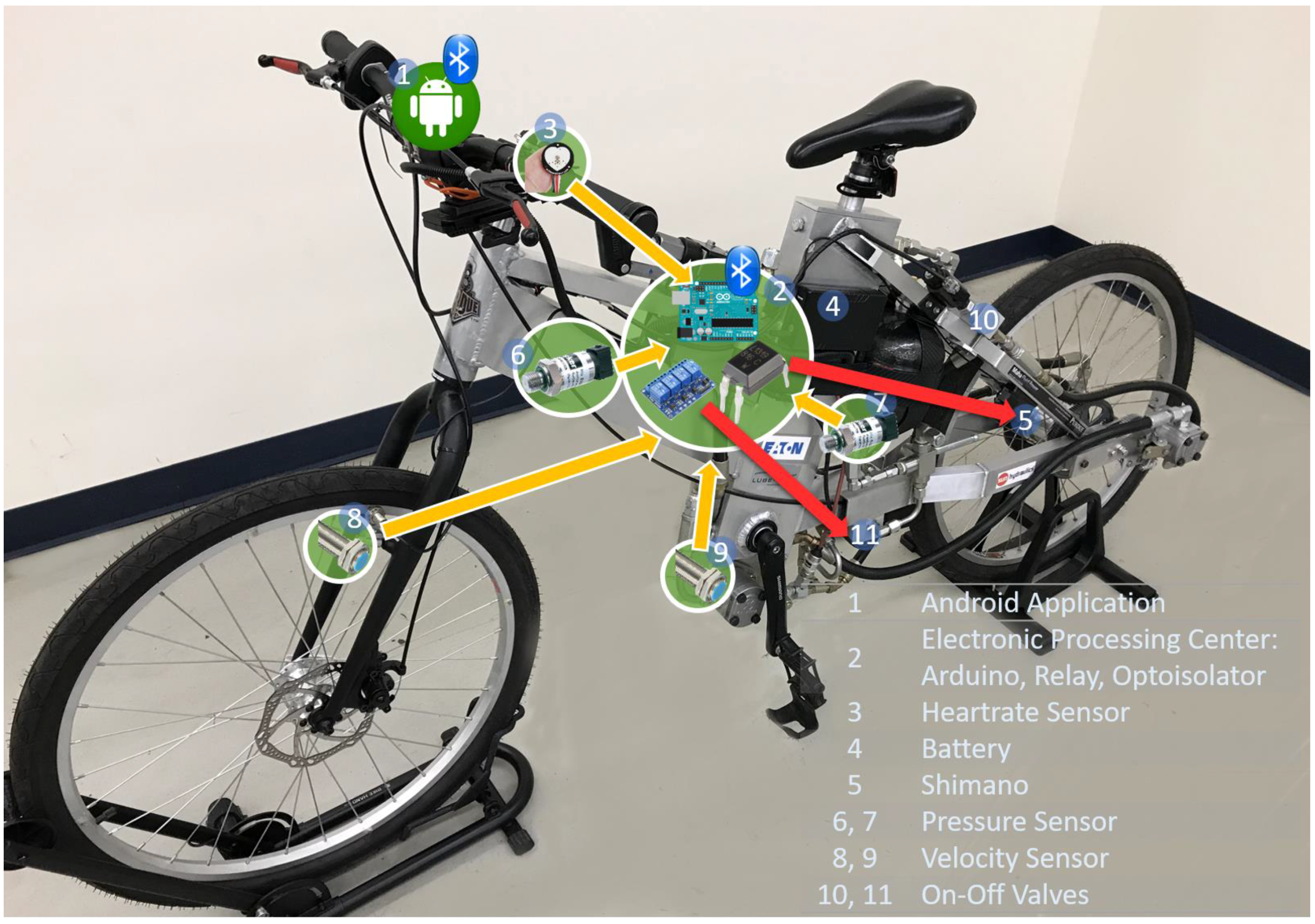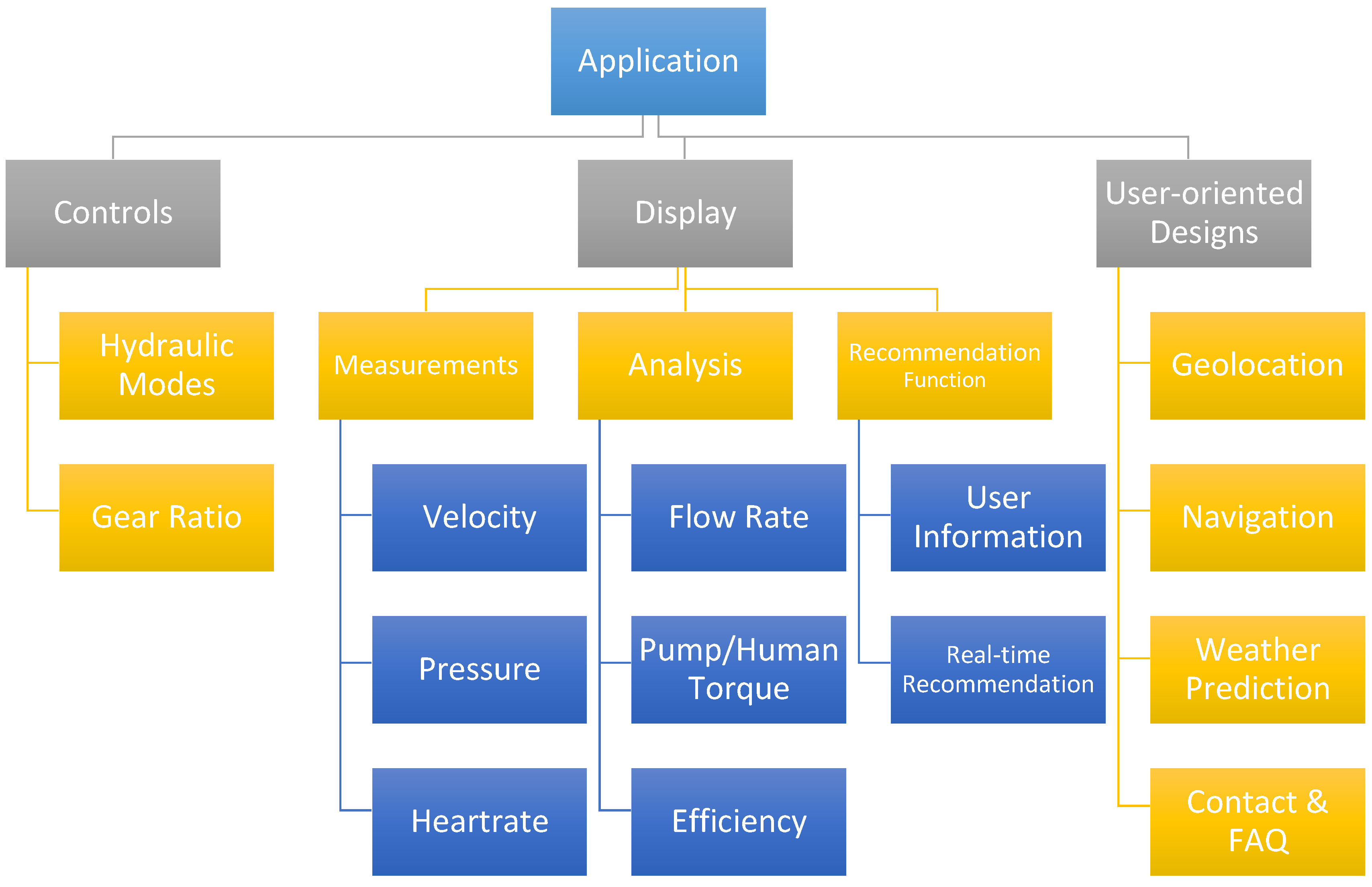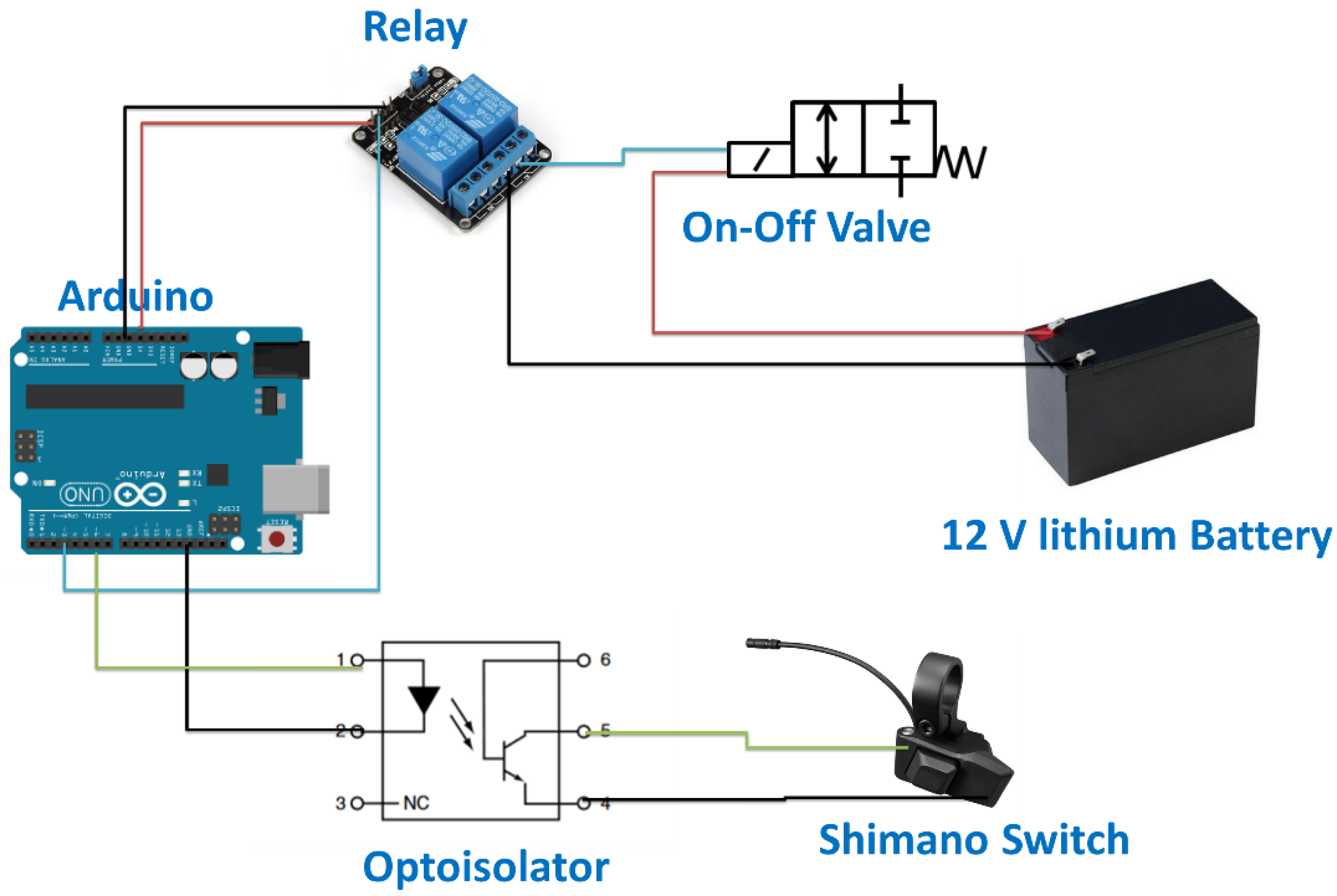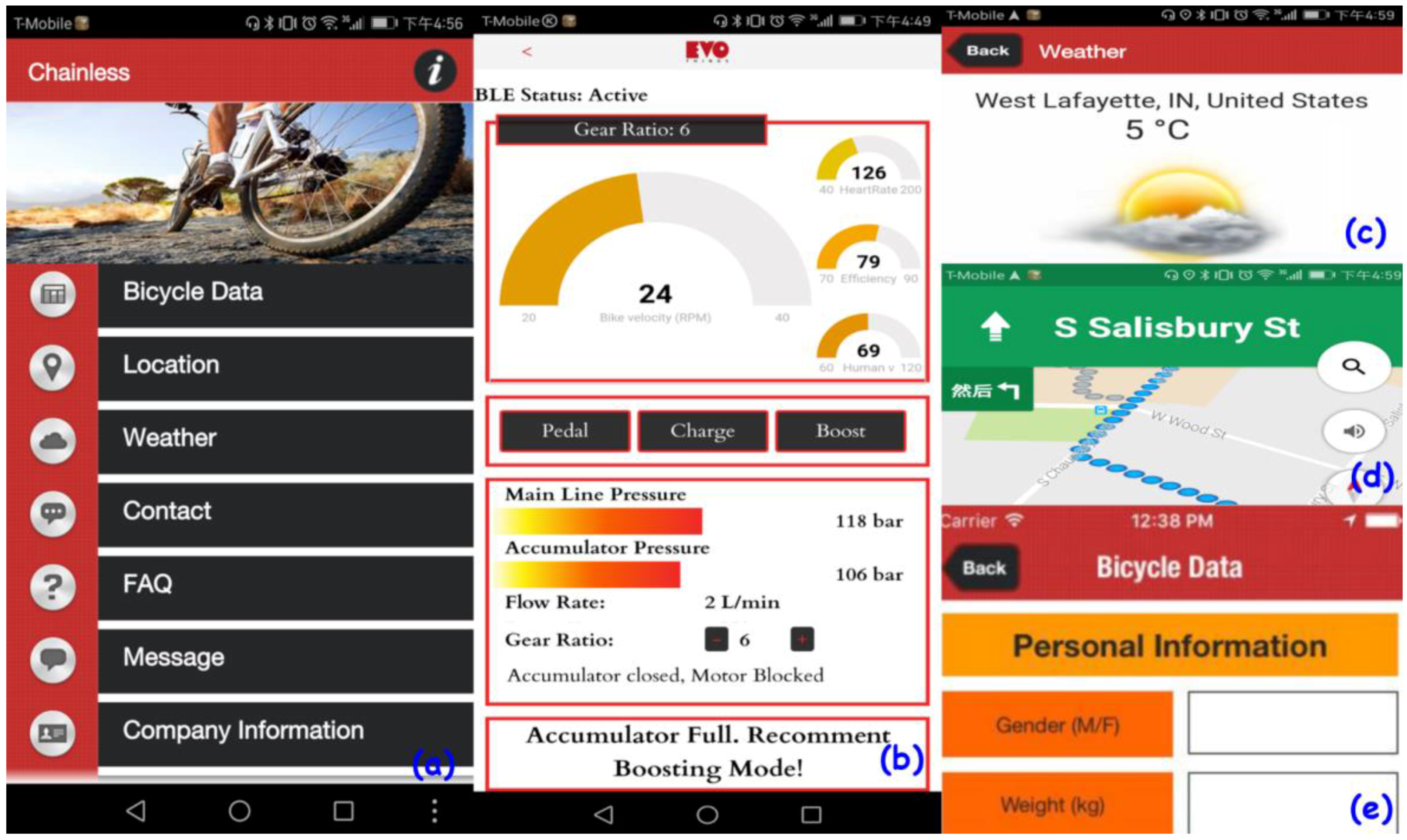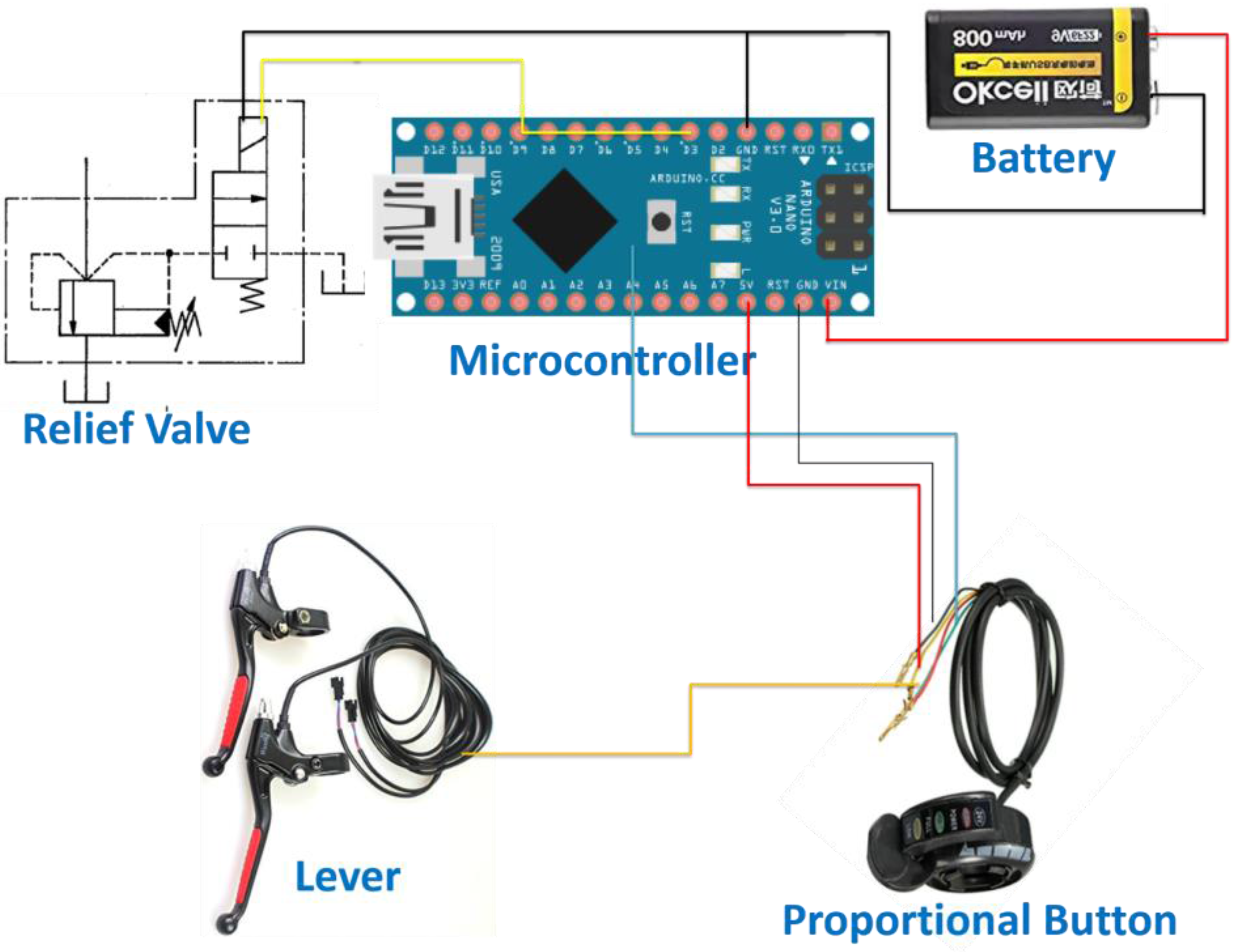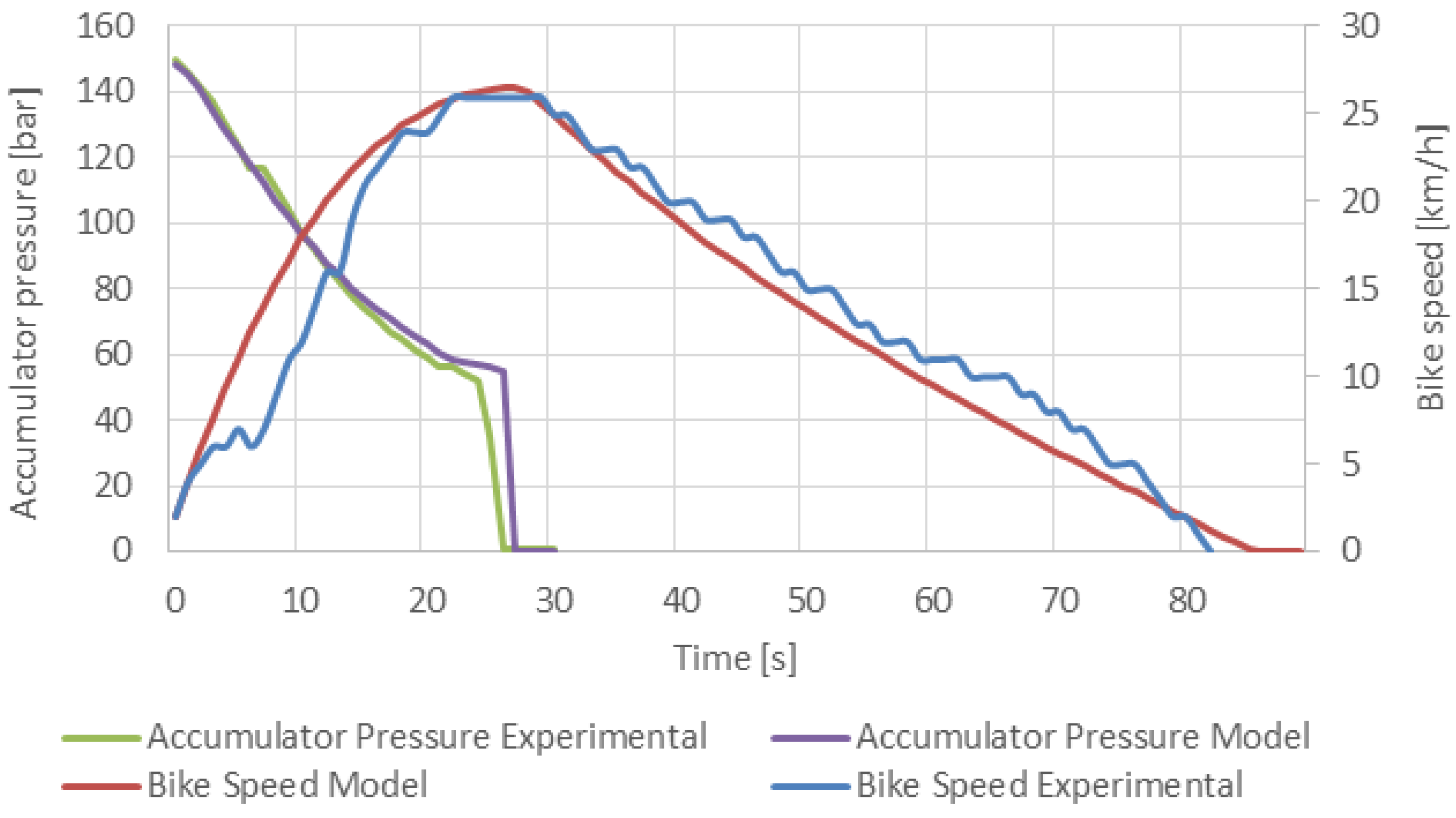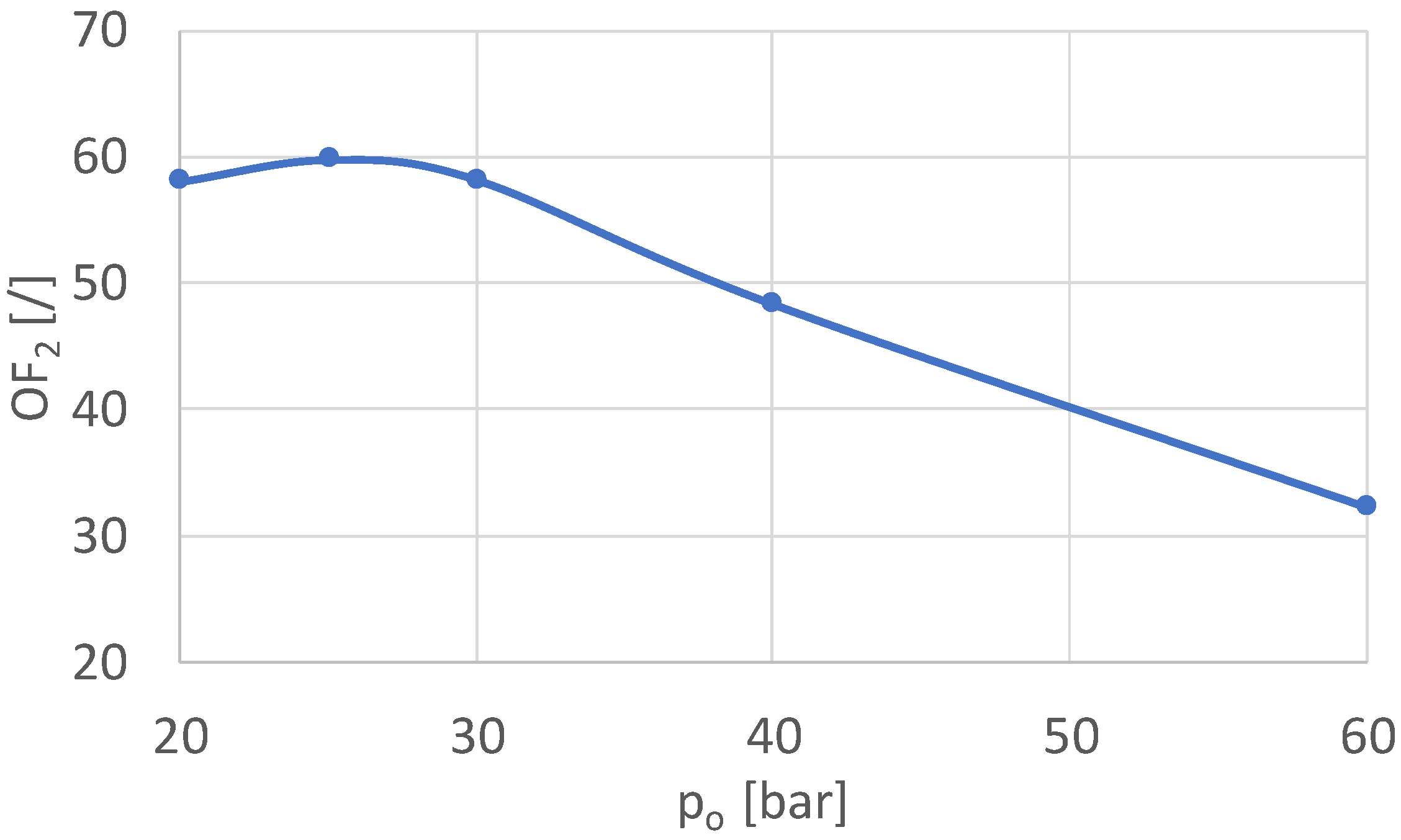1. Introduction
Fluid power technology has advantages of layout flexibility, a good power to weight ratio, and ease of control that are well reflected in hydrostatic transmissions and have been successfully applied in many heavy-duty applications including construction, agricultural, forestry and military machines, etc. However, the integration of fluid power technology into light-duty applications still presents significant challenges, especially for human-powered vehicles, such as bicycles. Most of the challenges relate to the unavailability of hydraulic pumps and motors suitable to the power scale and range of operating conditions typical of such applications.
Notwithstanding, there are potential advantages to fluid power in human-powered vehicles. In particular, with respect to traditional “pure mechanical” bicycles based on the chain sprocket transmission system, the use of a hybrid hydrostatic transmission allows for energy recovery during braking phases and enables power management strategies, which decouple the human power input from the instantaneous power request given by the vehicle resistance. In particular, the energy stored within the transmission system during phases of braking or of excessive input energy could be utilized in subsequent phases, such as vehicle starts or uphill pedaling conditions, to assist the cyclist. Moreover, a properly designed fluid power system can avoid the typical disadvantages of chain drives, which are:
The safety risk to the rider in the form of entangling clothing in the chain and the sprocket due to the fact that the chain drive is typically exposed;
The undesirable occurrence in variable-speed bicycles of shifting to the wrong gear and positioning the chain in an intermediate position between sprockets, which leads to surprising and dangerous slipping of the chain and the consequent unbalancing of the cyclist;
The lubrication requirement of the chain, which attracts dust and dirt, causing aging and decay of the efficiency of the system and unpleasant effects due to possible contact with clothing.
The energy efficiency of the transmission system as well as the overall weight, particularly due to the abovementioned unavailability of properly designed fluid power components, represent the main design challenges of a hydrostatic transmission for a human-powered vehicle, with respect to a pure mechanical transmission system.
Fluid power technology, in comparison with the electric power technology widely adopted in bicycles nowadays, might appear inferior from the point of view of commercialization and technical pros and cons. A deep technical comparison is outside the scope of this paper. However, it is clear that electric power technology takes advantage of the more intensive effort made by the industry in developing components suitable for the size of the application. Another fact to take into consideration is that essentially all electric bicycles do not truly have zero emissions associated with their use, since they require energy charging from the network. Most of the electric bicycles available on the market do not implement braking energy recovery features, which require more expensive electric gearless hub motors. Disposal of electric batteries, which have a finite life span, and use of rare materials in electric components are additional factors that mean the electric vehicle is not a completely environmentally friendly solution for human-powered vehicles.
Instead, a hydraulic bicycle can use components that are for the most part made with non-noble materials (iron, steel, or aluminum), and a working fluid that does not require frequent replacement and can be environmentally friendly (such as the bio-oil used in the present study). Moreover, hydraulic hybrid systems can be more efficient than electric hybrid systems [
1], and they offer more opportunities for integrating regenerative braking [
2].
The potential advantages of hydraulic bicycles have motivated a certain amount of research effort over the last decades. Basic closed-loop hydrostatic transmission systems, essentially using a hydraulic pump connected to the pedals and a hydraulic motor connected to the rear wheel, were proposed in some patents, even recently. Significant is the patent [
3] that describes a solution with variable vane units used as pumps and motor. The solution includes a manual mechanism that varies the displacements of the units to maintain constant system pressure (approximately proportional to the rider torque effort). Many other solutions are conceptually similar, but are based on different design architectures of the positive displacement units used as pumps and as motors: for example, Smith [
4] uses a different solution with vane type units; instead, the patent [
5] proposes a radial piston pump and a gear motor; Chattin [
6] uses external gear units as its pump and motor. Piston units are used in the patents [
5,
7]. Another significant example of specially designed positive displacement machines was designed by Brackett [
8], who proposed a fixed displacement pump and a variable displacement motor. None of these systems includes brake energy recovery features; they are intended to operate as traditional bicycles. In addition, though a functional transmission is created, no electronic device or software aid is integrated to monitor the performance and efficiency.
All of the abovementioned patents describe possible technology solutions, but do not report basic sizing considerations or expected/measured performance. Some technical publications address the problem of sizing a basic of hydrostatic transmission for light duty, bicycle-like applications: Chang and Yao [
9] describe the case of an open-circuit electro-hydrostatic transmission, although the results reported in the work show a top speed of only 7 km/h for an overall vehicle weight of 135 kg! In Yang and Zhong [
10], another design method is reported, although no experimental results are discussed.
Some more recent efforts have aimed at exploring energy recuperation in human-powered vehicles. Interesting patents on compact regenerative systems for bicycles were taken out by Amarantos [
11] and Swain et al. [
12]. More extensive work on regenerative bicycles is presented in the papers written by Lagwankar [
13] and Truong et al. [
14]. They both describe the sizing of an open-circuit hybrid transmission, in which different modes of operations, including normal pedaling and regenerative braking, are realized by solenoid valves. Unfortunately, both works show only simulation results, but velocities above 32 km/h are predicted. A similar work was also performed at the University of Minnesota [
15]: in this work bent axis piston units are used in an open hydrostatic transmission, with an accumulator used for regenerative, manual charge, and boost mode through manual switches. A prototype was also realized, and the performance was good (maximum pedaling speed of about 17.7 km/h), although the weight amount and distribution, as well as the mechanical linkages of the hydraulic units (two chains/sprockets were used) were not optimized. Another study recently completed at the authors’ institution was documented by Foa et al. [
16]: in this case, a four-wheel vehicle was realized with an open-circuit hybrid transmission based on external gear pumps. The vehicle demonstrated excellent capabilities for electronic control of the hydraulic system, but the vehicle performance was quite poor.
The present paper aims at further contributing to the field of innovative human-powered vehicles, and shows a design procedure for a bicycle that:
- (1)
Maximizes velocity while pedaling;
- (2)
Minimizes overall weight;
- (3)
Recovers energy while braking;
- (4)
Allows for a power boost (use of energy from the accumulator);
- (5)
Maximizes human comfort and implements all necessary safety features.
Similarly, to the previously mentioned works by Foa et al. [
16] and Wang et al. [
15], prototypes were realized to participate in a U.S. national competition for human-powered fluid power vehicles open to engineering schools. The vehicle realized within this work, named the “PurdueTracer,” participated in the 2017 Fluid Power Vehicle Challenge (FPVC) organized by the National Fluid Power Association (NFPA), held in Ames, Iowa in April 2017, and won the overall championship. The FPVC fully assesses the main criteria (1)–(5) specified above, through specific evaluation criteria on the vehicle design as well as purposely designed races. In particular, one race is dedicated to endurance (about 2 m); one race to sprint capabilities; and one to the boost capabilities of the vehicles (utilization of the energy stored in the accumulator). More details on the competition can be found online [
17].
The following sections describe the methods utilized to design PurdueTracer. It is important to point out that this research put significant focus on the maximization of the performance parameters of the hydraulic system, namely weight, energy efficiency, and amount of energy recovery. However, other important aspects related to the designing of a hydrostatic transmission where the prime mover is a human being were also considered.
Over a wide range of pedaling speeds (up to 100 rev/min, depending on the individual), the torque generated by a human is almost constant [
4,
5,
10,
18]. Other factors also affect the torque and the resistance of the cyclist. Primarily, the geometrical configuration of the bicycle has significant implications on the torque level: the angles and the distances between seat, handlebar, and crankshaft, as well as the crankshaft pedal radius, have effects on the human performance. The proportions typically used in commercial bicycles reflect accurate studies performed in this field [
18].
Another level of human–machine interaction that affects the performance of the cyclist is related to the visual aids and monitoring devices available during the physical exercise. It is proven for almost all intensive sport activities (gym cardio equipment, jogging, cycling) that the ability to monitor the human status, e.g., the heart rate, the instantaneous power consumed, etc. as well as vehicle performance data (pedaling speed, vehicle velocity) can improve the human ability to achieve certain performance goals. All these human factors related to the structural design of the chassis as well as the ease of monitoring and control of the vehicle were addressed in the proposed design. In particular, a smartphone app was developed for PurdueTracer to enable all the desirable features of a modern and intelligent vehicle, which could potentially encourage potential users to use smart hydraulic bikes like the one proposed in the research done by Navarro et al. [
19].

